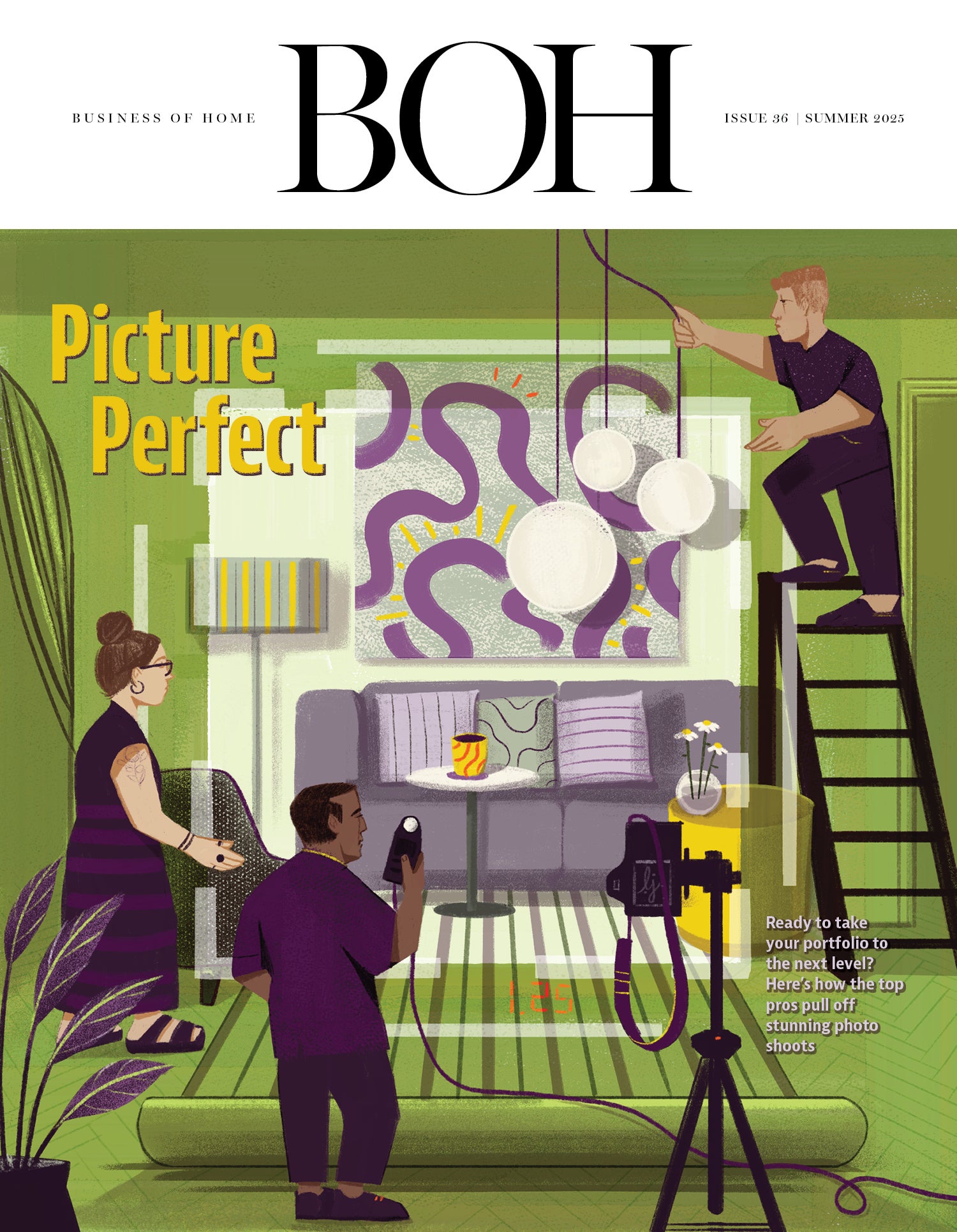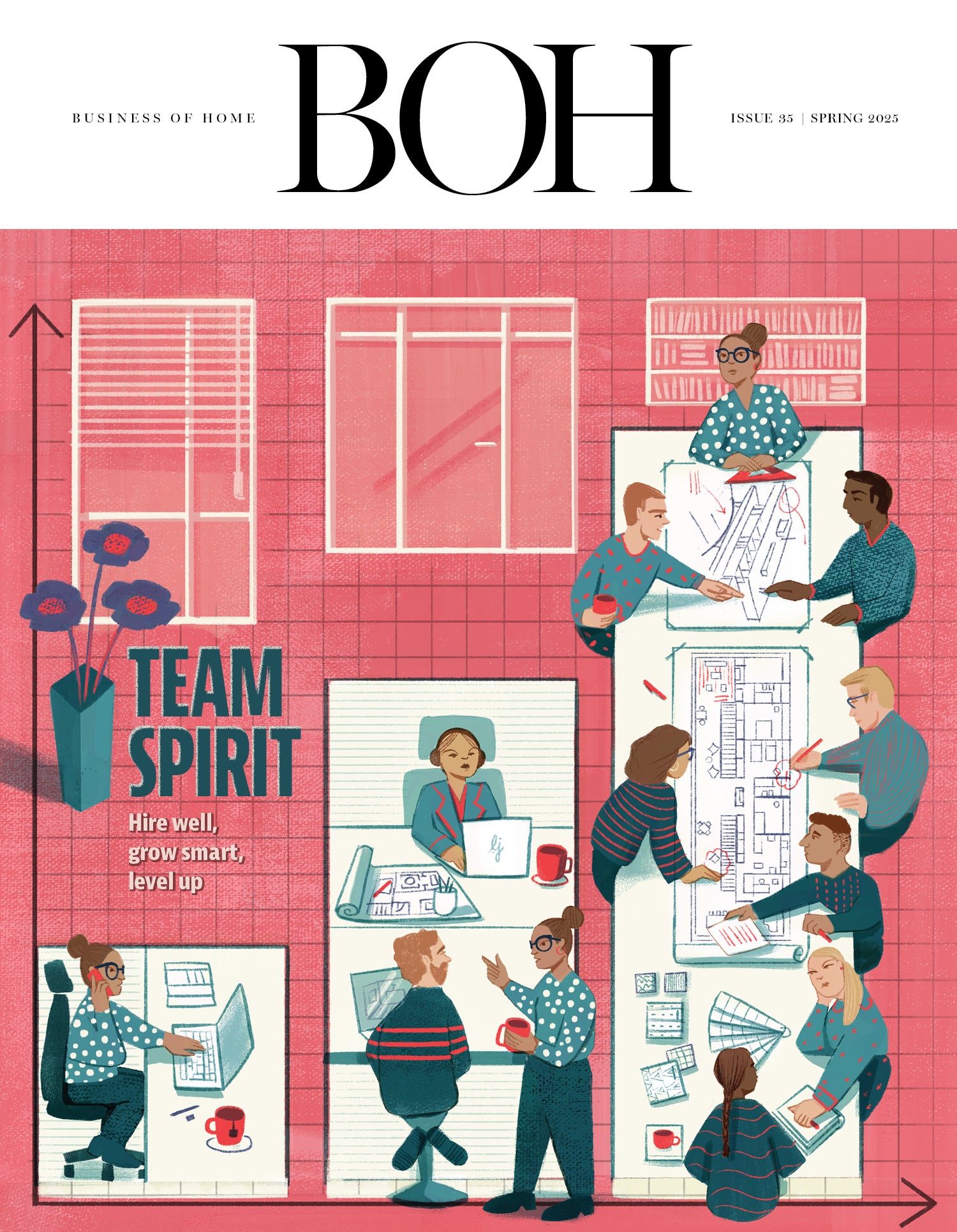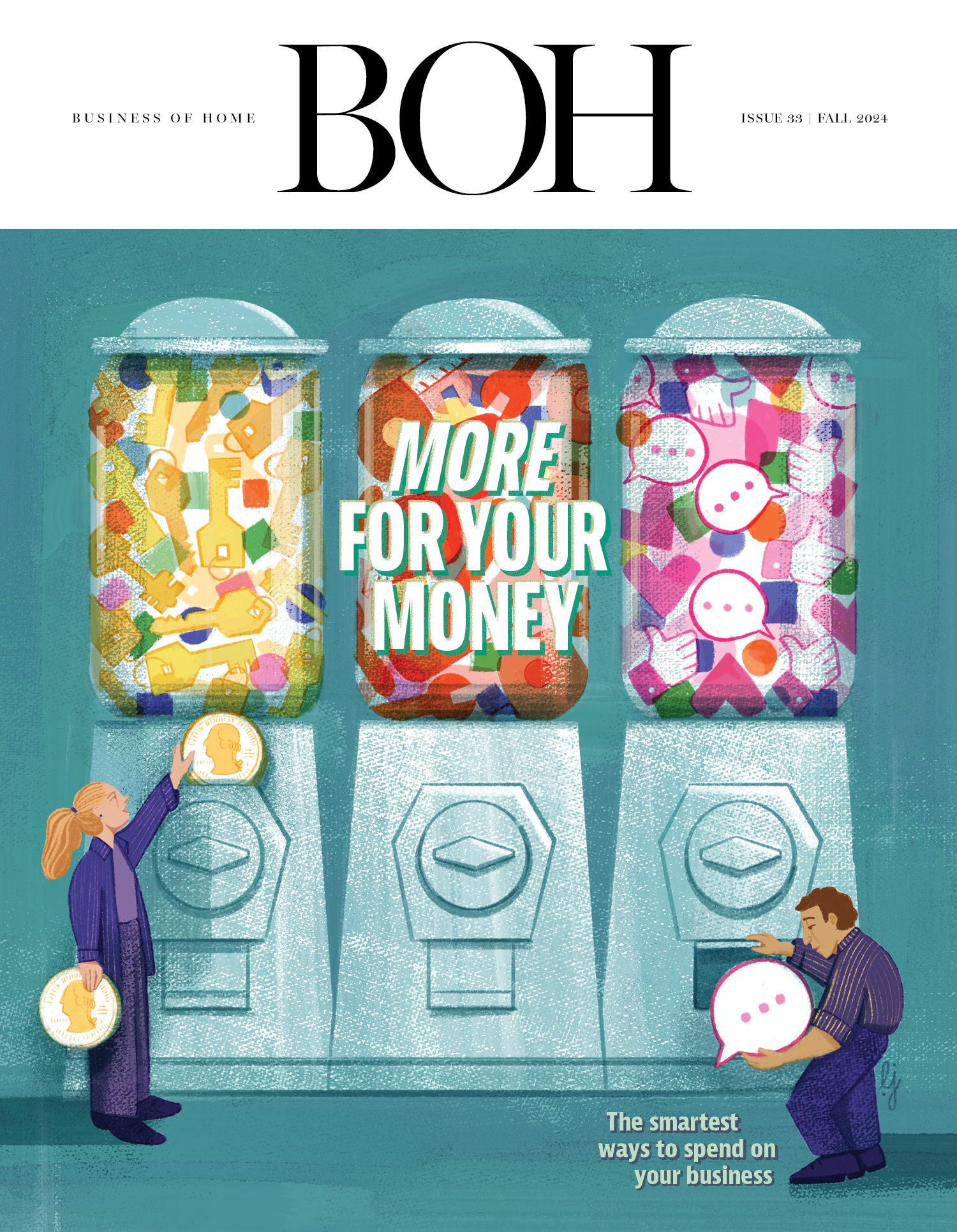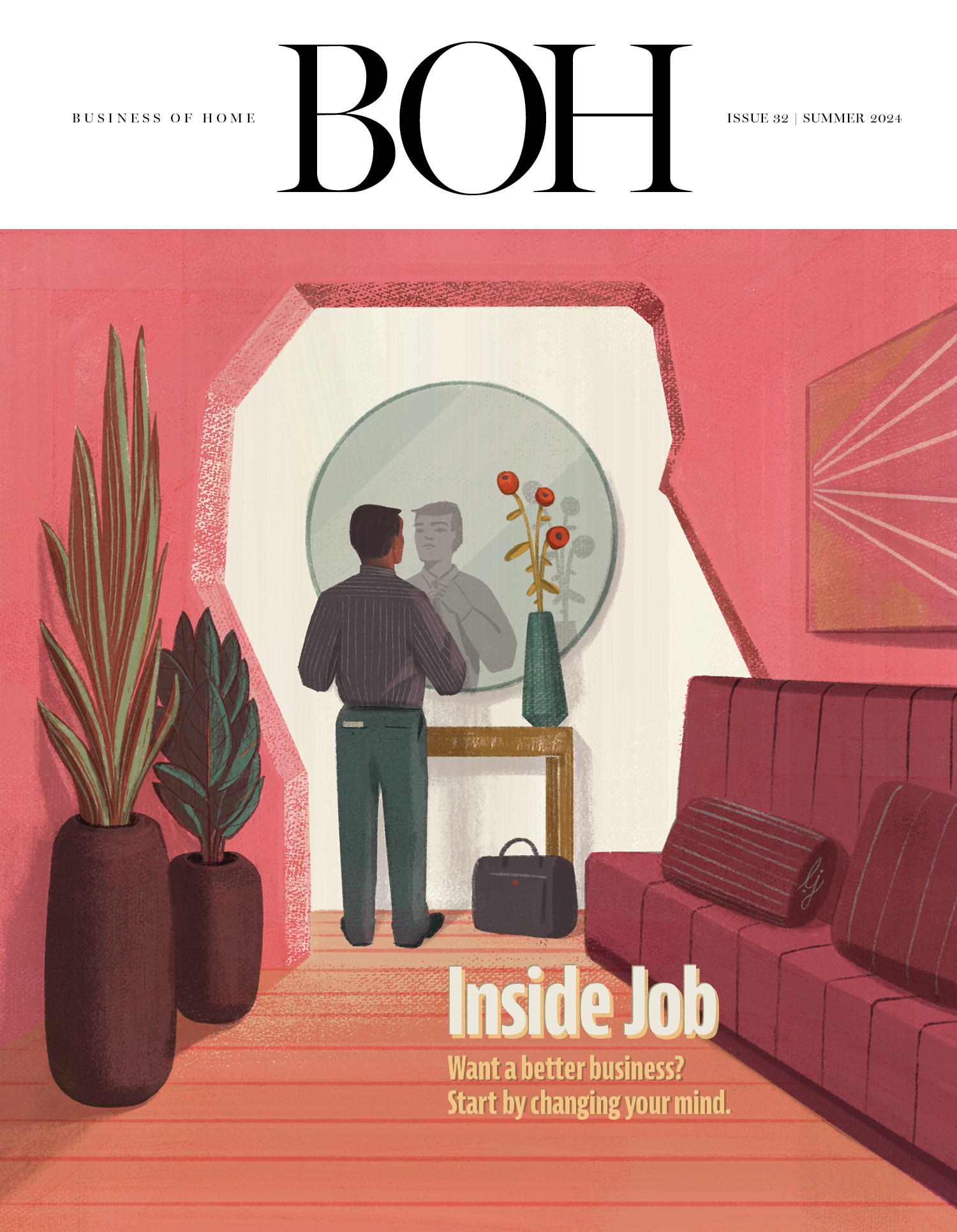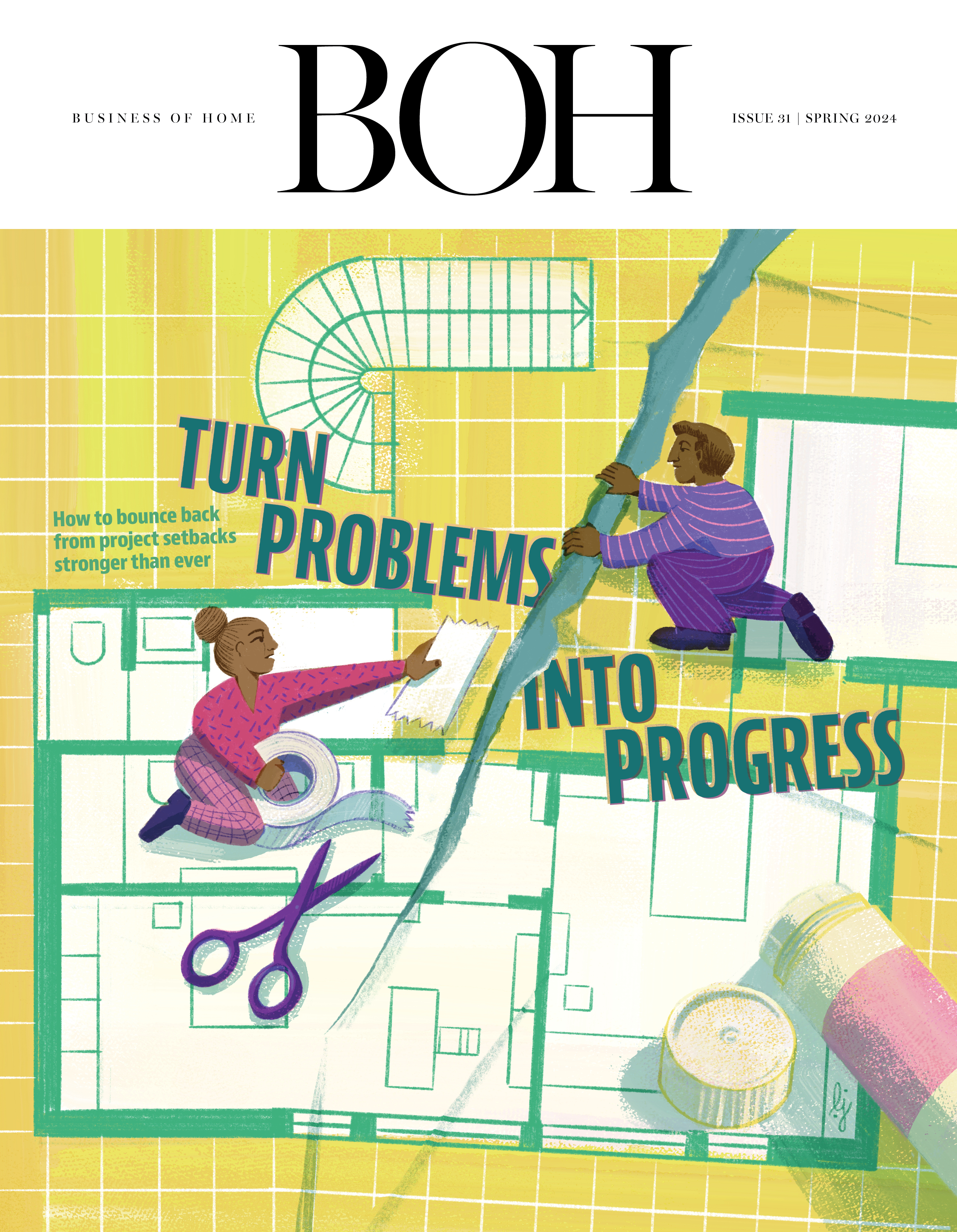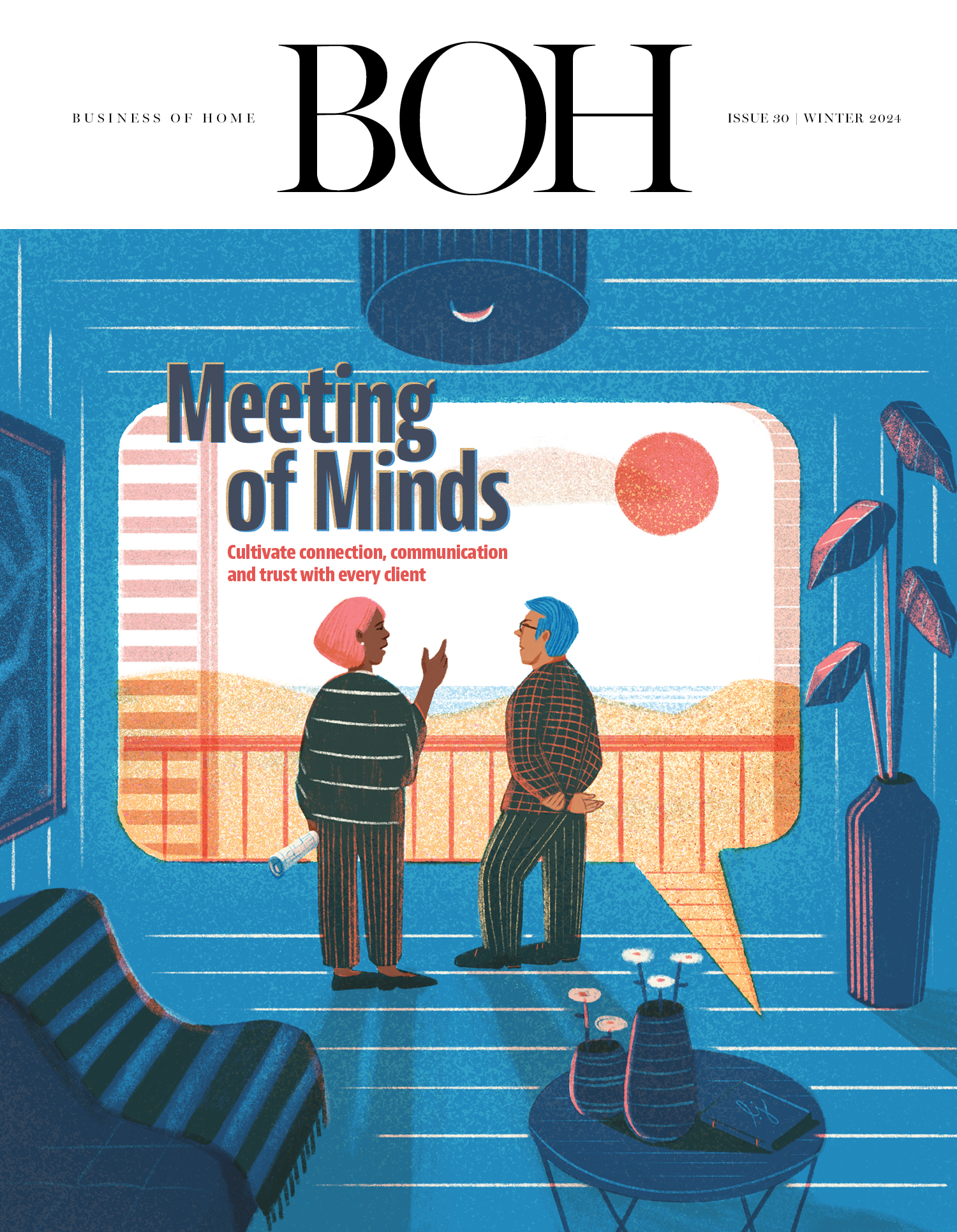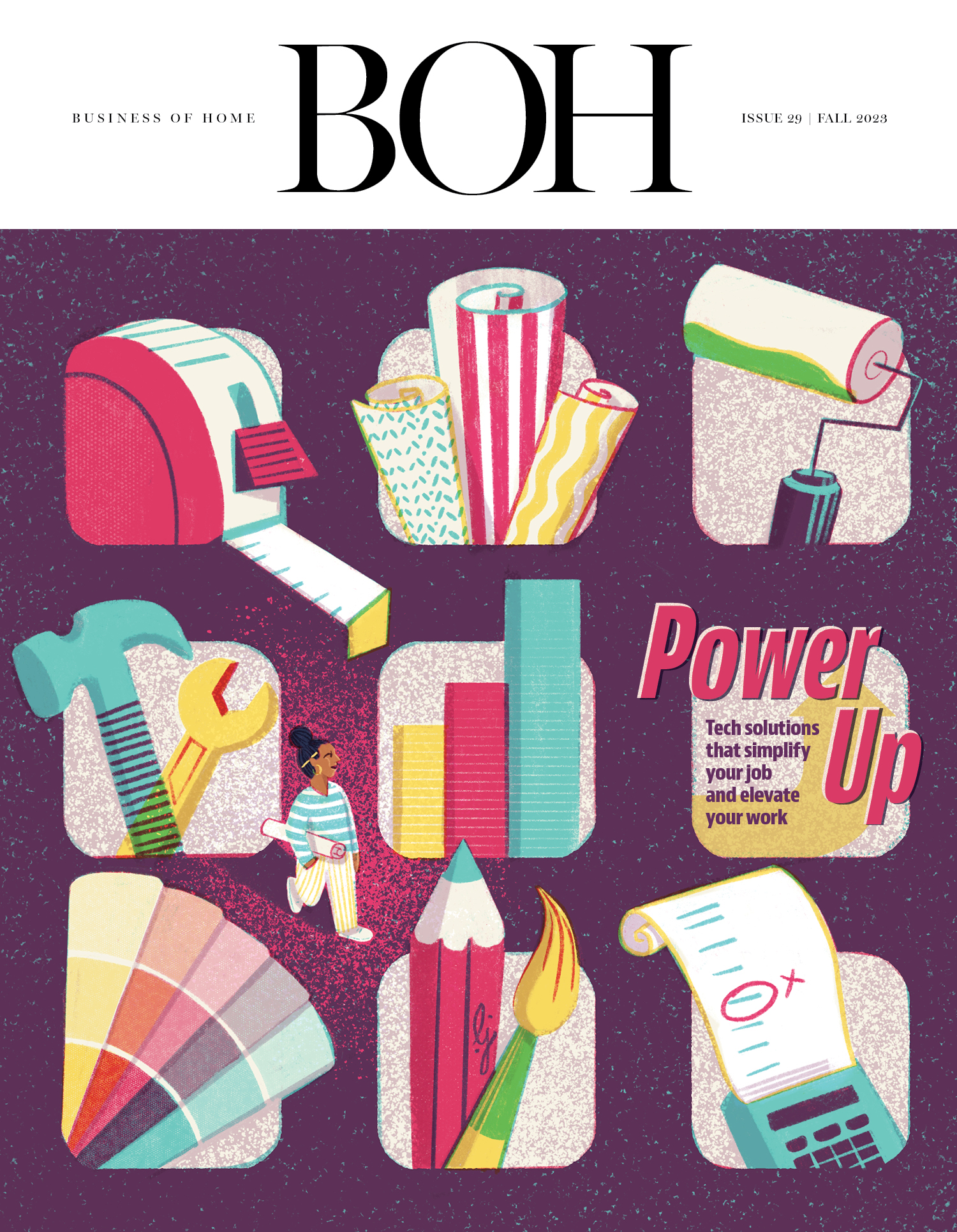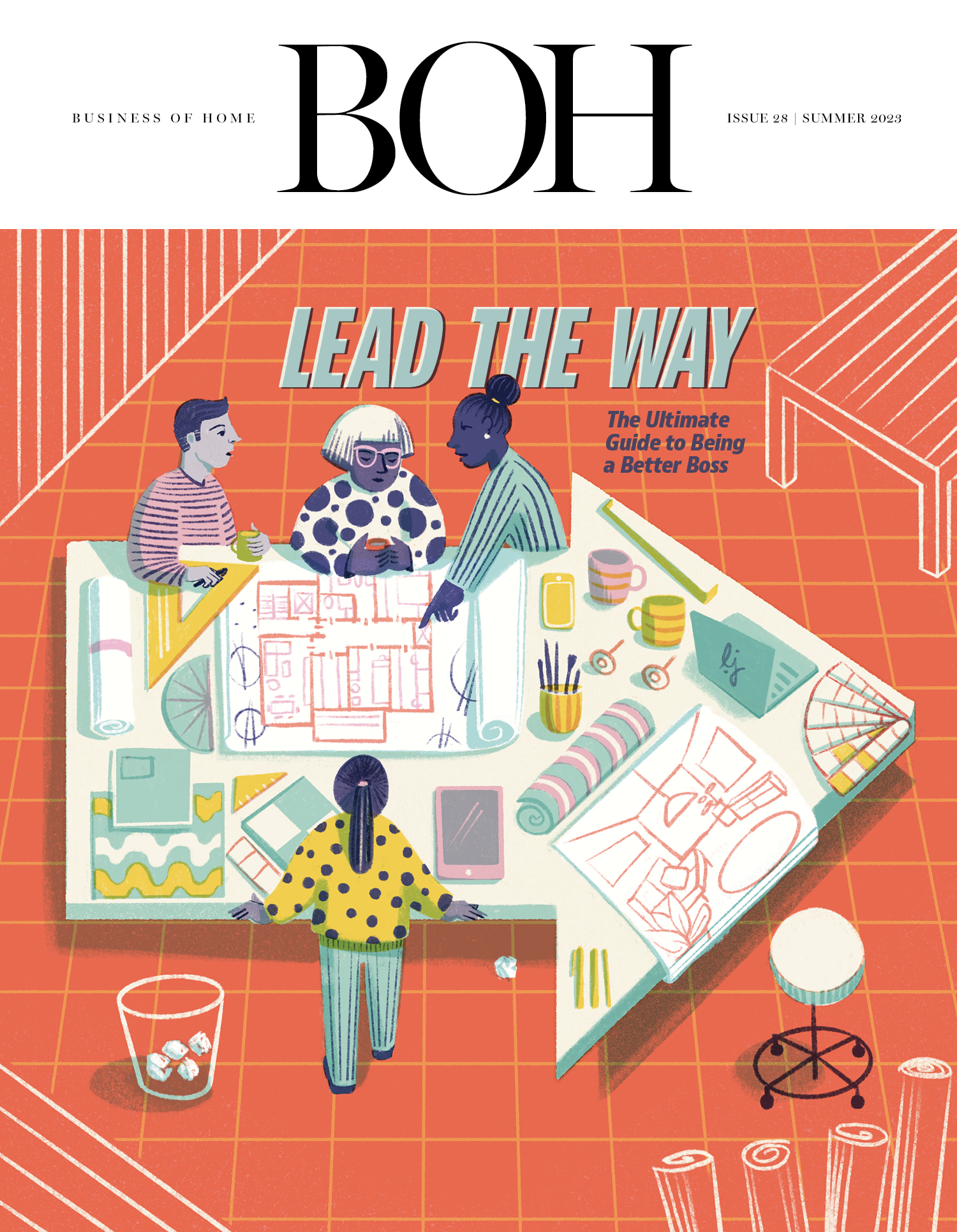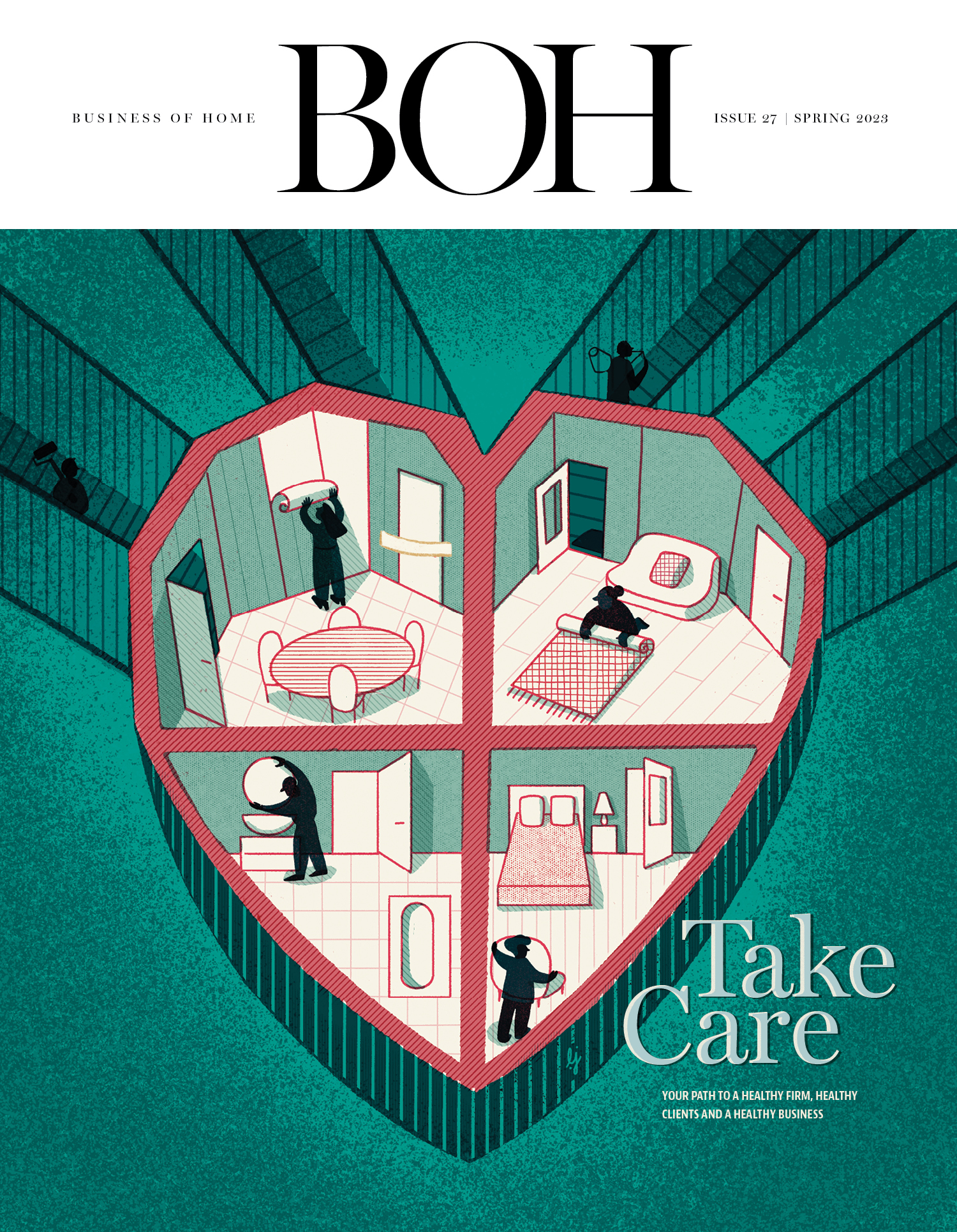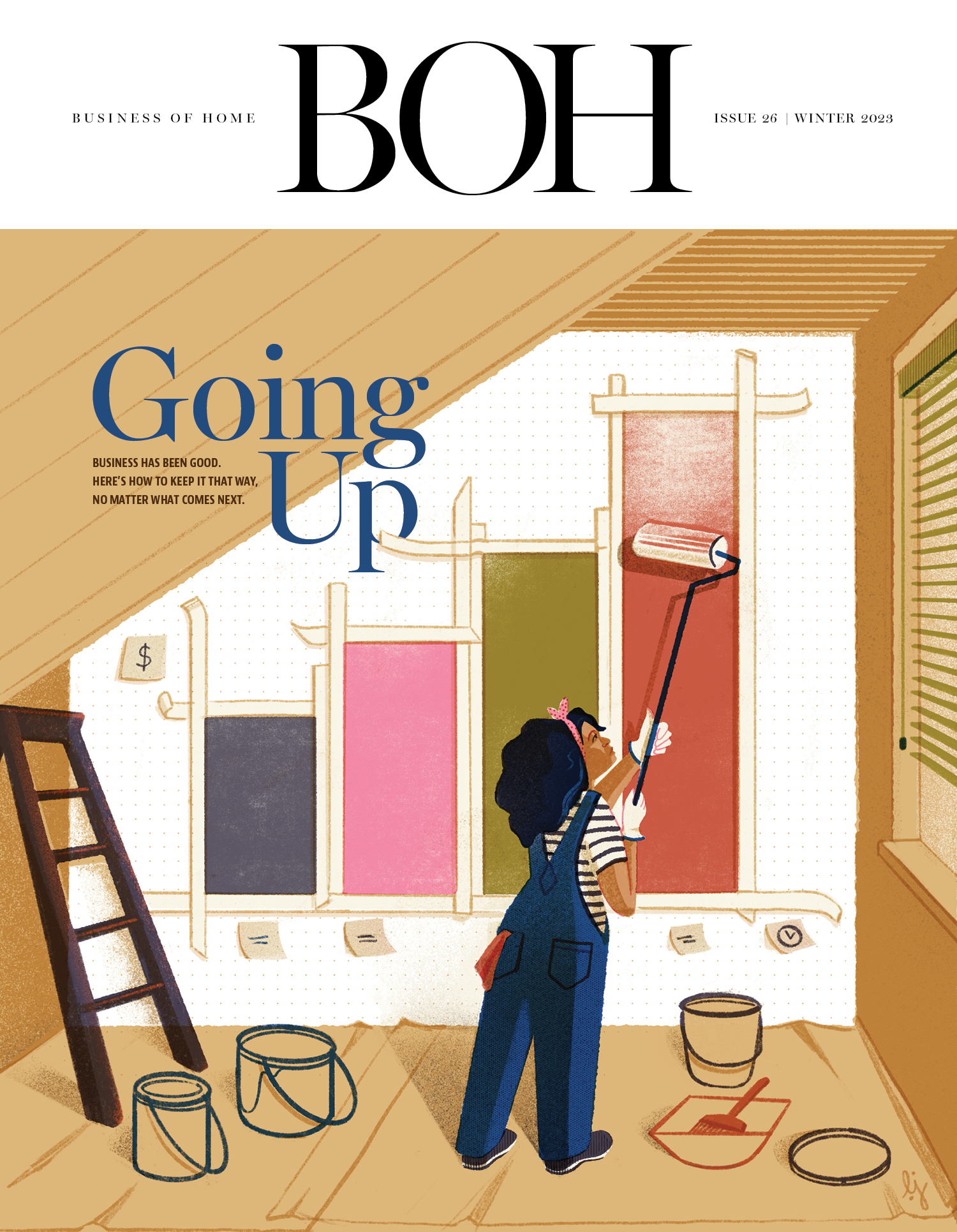You must, must listen to your clients. But do not for a minute take them at their word.
To rewind: Ours is a visual industry. Designers can cut through a lot of indecision with a photograph, a rendering, even a sketch on a napkin. But you can’t run a project on pictures alone, and words—those clunky things!—need to be used from time to time. Therein lies the danger.
Words are especially necessary in the rickety early phase of a project, when there’s not much inspiration to go on and clients are dreaming their homes aloud. What they say—a flood of long-bottled-up likes, dislikes, hopes and anxieties—may be helpful for designers looking to put together a mood board. But just as likely, it will be a muddle of half-formed ideas and Rorschach test-y words like modern that mean 10 different things to 10 different people.
Let’s be kind to clients. “Most people, when they talk about design, don’t do it ‘correctly,’” says Devon Tobin of Denver-based firm Duet Design Group. “Which is OK! They don’t have that education, necessarily. I’m the daughter of a kidney doctor; I liken it to that. You don’t go up to a medical professional and start spouting jargon. With a lot of kindness, I try to steer [clients] away from trying to name their style.” In particular, clients trying to define their “style” in broad strokes can be fraught, as they’re usually talking about much more than patterns versus plains. Does “I’m not into traditional” mean “I don’t like chintz,” or does it mean “I don’t want to turn into my parents”? Early on, hard to tell.
Let’s also be honest: Design language is imprecise. Reasonable people can disagree about what counts as “bright” when it comes to a yellow, and where exactly to draw the line between traditional and transitional. From that ambiguity springs a lot of confusion, miscommunication and wasted time as designers try to figure out how to specify a “pillow that’s not really modern, but is very contemporary, and is green, but more of a blue.”
The solution to the problem is patience, education and time. Over the course of a successful project, designers and clients will develop a shared vocabulary that’s fit for purpose. But for a handy shortcut—and for fun—we reached out to 11 designers to share “translations” from their own experience: Situations in which a client said X, but really meant Y. The end result? A mini “clientspeak dictionary” to keep in your back pocket for the next discovery call.
“I want my home to look like a five-star hotel”
When clients say they want a look, often what they actually want is a feel. “At first, I’m thinking ultra-luxury, sleek lines and high-end finishes. But when we dig deeper, I realize what they really mean is that they want a space that feels like an indulgent escape,” says Nashville designer Brad Ramsey. “They’re not looking for sterile perfection; they want soft, inviting textures and personalized touches. They crave a sense of calm luxury that feels welcoming and relaxing, like they could unwind with a drink after a long day—not feel like they’re in a museum.”
“Minimalist”
Frequently used, but rarely meant in the starkest, empty-white-boxiest sense of the word. “When clients say, ‘I want a minimalist space,’ they often mean ‘I want my home to feel calm and uncluttered, but I still want warmth and personality,’” says Denver designer Margarita Bravo. “We once had a client who insisted on a minimalist aesthetic. As we explored materials, textures and lighting, it became clear she didn’t want a sparse space—she wanted a serene, intentional and effortlessly elegant home.”
“I hate wallpaper”
“Wallpaper” doesn’t always mean wallpaper, the material. Sometimes it’s wallpaper, the experience. “It’s usually some form of wallpaper trauma from the 1980s. They tried to install it themselves, fought with bad glue and seams, and then had to spend days scraping it off years later,” says Sacramento, California–based designer Rebecca Plumb. “It’s not that they actually hate wallpaper—they just have PTSD. Once I show them how much better today’s options are, and the benefits of a professional install, they’re usually willing to give it another shot.”
“No chandeliers”
Misunderstandings often come from a client confusing a general industry term for a specific one—or vice versa. “Our client bought an historic 18th century house in Charleston where every single room came with ornate chandeliers, and she was emphatic from the beginning of the project that no chandeliers would be in the lighting plan,” says William Cullum, senior designer at New York firm Jayne Design Studio. “After a year or two of selecting light fixtures and going through all different versions together, it became clear that what she wanted to avoid was the most literal version of traditional chandeliers with crystal prisms—not all decorative ceiling light fixtures with multiple arms. We looked to Howe London for more contemporary versions of chandeliers in the dining room and parlor room.”
“Timeless”
This term is a puzzle. Does it mean “a look so risk-averse it’s anonymous” or “a look that strongly evokes a tried-and-true style”? Or something else entirely? “Clients often mean: ‘I don't want to regret my choices in five years,’” says Bravo. “Timelessness is subjective, and for many, it doesn’t mean traditional or neutral—it means a home that reflects their style in an enduring way. We once had a client who was adamant about a ‘timeless’ look, but after diving deeper, we realized she loved bold colors and sculptural furniture. She wasn’t afraid of personality in design—she was scared of trends that would feel dated too quickly. The solution? A foundation of well-proportioned, high-quality pieces paired with statement elements that could evolve.”
“I want my kids to design their rooms”
A statement to be taken earnestly, but not literally. “This translates into: ‘Let’s give them a couple of options, and I’ll pick one out for them,’” says William Clukies, senior associate at MR Architecture + Decor in New York. “Parents want to maintain control while creating the illusion of choice, knowing their children’s tastes might not align with their vision for the home.”
“No color”
Color is probably the most common area of confusion for clients. Some are truly lovers of greige. But, for many, “no color” is more complicated. In some cases, it’s only certain colors that are truly off-limits. “A client once told me they wanted absolutely no color. But once we started pulling inspiration, I realized it wasn’t color they hated—it was anything bright or high-contrast,” says Lauren Lerner of Scottsdale, Arizona, firm Living With Lolo. In other cases, the request is more about anxiety than hue.
“A client once told me, ‘I want everything neutral—no color,’’ recalls New York designer Damon Liss. “As we talked more, I realized that ‘no color” wasn’t really about a love for neutrals; it was about a fear of making the wrong choice. Instead of forcing color into the conversation, we focused on creating richness through texture, depth and warmth. Soft plaster walls, rich wood tones, layered linen and boucle fabrics, all in those airy, warm neutrals they felt safe with. But as [the client’s] confidence grew, so did their openness to color. A dusty blue wool sofa became the living room’s centerpiece; yellow ceramic lamps added a playful glow; and deep green patterned pillows brought an unexpected vibrancy. Then, to tie it all together, we added a stunning handblown glass ceiling fixture in shades of soft blush and amber. Ultimately, they didn’t hate color—they just needed to discover it on their terms.”
“I don’t like window treatments”
As with wallpaper, past bad experiences can play a role here. “They’re picturing bulky drapery, outdated valances, or ill-fitting blinds from big-box stores,” says Rasheeda Gray of Philadelphia-area firm Gray Space Interiors. “In reality, they don’t dislike window treatments—they just associate them with an old-school aesthetic or past frustrations. Once I introduce them to today’s sleek, functional and stylish options—paired with expert measuring and professional installation—they’re usually excited.” Tobin agrees. “I hear this a lot, and I always tell clients: Well, number one, if you ever want your room to be dark or to see what’s on your computer screen, you’re going to need them,” she says. “It’s really more about what style fits the home.”
“No gold”
Again, bad memories from a bygone design era can often lead clients astray. “After digging a little deeper, I realized what [my client] actually hated was the shiny, cheap-looking brass from the 1990s,” says Lerner. “The second I showed them soft, brushed brass and unlacquered finishes that patina over time, they were hooked, and now their whole house has warm, aged brass accents that they love.”
“Victorian”
“We once had a client who kept referring to elements that looked ‘Victorian,’” recalls New York architect Enda Donagher. “Alarmed at first, we soon learned that ‘Victorian’ just meant ‘slightly too old-fashioned for me.’”
“Navy”
Blue should be easy to define, right? Not always. “As part of my onboarding process, I ask every client to fill out a detailed questionnaire, and one of the questions is ‘What are your favorite colors?’ My client circled just one: navy/indigo. I thought, ‘OK! This is easy!’ Fast-forward to the design presentation. I carefully curated a gorgeous, sophisticated palette, anchored by the rich navy she had so confidently declared her favorite. And she loved it. Then … the plot twist,” recalls South Orange, New Jersey–based designer Gail Davis. “A few days later, I get the call: ‘You know, I think the blue feels heavy. Maybe a little dark. I want something lighter. Airier.’ I blinked. I stared at the phone. I looked at my notes. The word navy was right there in all caps.
“This moment is why designers have to be part creative, part therapist and part detective. It’s not just about the answers clients give—it’s about what they really mean,” continues Davis. “Sometimes, ‘navy’ isn’t about the color at all. It’s about a feeling, a mood, an idea that takes shape only when they see it in the context of their own space. In the end, we found a lighter, more ethereal shade of blue that still nodded to her original vision without overwhelming the room. And the result? Absolute perfection. For the record, I’m keeping navy in pencil from now on.”




